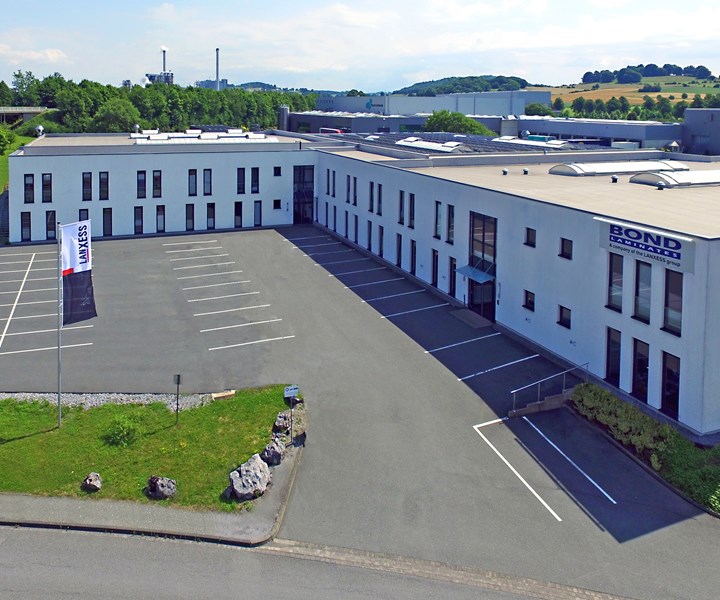LANXESS commissions two new production lines for Tepex thermoplastic composites
The 1,500-square-meter expansion to the Brilon, Germany facility increases production of the continuous fiber-reinforced thermoplastic composites by 50%.

Bond-Laminates GmbH has increased its Tepex manufacturing capacity by around 50%.This is a response to the strong demand in the mass production of highly stressable components for lightweight vehicles and consumer electronics, according to the company. Source | LANXESS AG
Bond-Laminates GmbH (Brilon, Germany), a wholly owned subsidiary of specialty chemicals company LANXESS (Cologne, Germany), has completed a 1,500-square-meter expansion to its Brilon facility to accommodate a commission for two new production lines for its Tenex continuous fiber-reinforced thermoplastic composites. The increase from six to eight production lines will, the company says, increase manufacturing capacity by about 50%.
The total investment in the construction of the new hall reportedly totaled more than a million dollars, and also included three cutting machines, such as a new four-head waterjet cutting machine for prefabricating component cuts.
According to LANXESS, use of Tepex is becoming increasingly more widespread in the automotive industry for the large-scale production of lightweight structural components such as frontend and bumper brackets, brake pedals and underbody paneling components. One recent example involved two electrically adjustable single rear seats for a variant of the Audi A8, whose seat shells are manufactured in a hybrid molding process using the polyamide-6-based Tepex dynalite. The seat shells are said to be around 45% lighter than a comparable metal version. LANXESS also sees potential for Tepex to be used to produce backrests and armrests as well as seat shells for new seating concepts in autonomous cars or for comfort seats for shuttle, VIP and family buses.
The company also sees potential for Tepex use in electric vehicles: “The spectrum of applications ranges from brackets for frontends, doors and bumpers, luggage compartment recesses, battery housings and brackets for electrical and electronics modules through to structural components in the greenhouse’ section and structural trims in the underbody area to protect the battery,” says Henrik Plaggenborg, head of Tepex Automotive at LANXESS.
Beyond automotive, applications of Tepex in consumer electronics have included structural components for cellphones, tablets, laptops and TVs. In the sports sector, Tepex is used in the manufacture of shoe soles, bicycle components, ski boots, body protectors and helmets.
Related Content
-
Braided thermoplastic composite H2 tanks with co-consolidated molded boss areas to fit EV battery space
BRYSON project demonstrates possible designs, automated manufacturing and low permeability concepts, including EVOH liner and novel PPA matrix.
-
Bladder-assisted compression molding derivative produces complex, autoclave-quality automotive parts
HP Composites’ AirPower technology enables high-rate CFRP roof production with 50% energy savings for the Maserati MC20.
-
SMC composites progress BinC solar electric vehicles
In an interview with one of Aptera’s co-founders, CW sheds light on the inspiration behind the crowd-funded solar electric vehicle, its body in carbon (BinC) and how composite materials are playing a role in its design.
.jpg;width=70;height=70;mode=crop)





